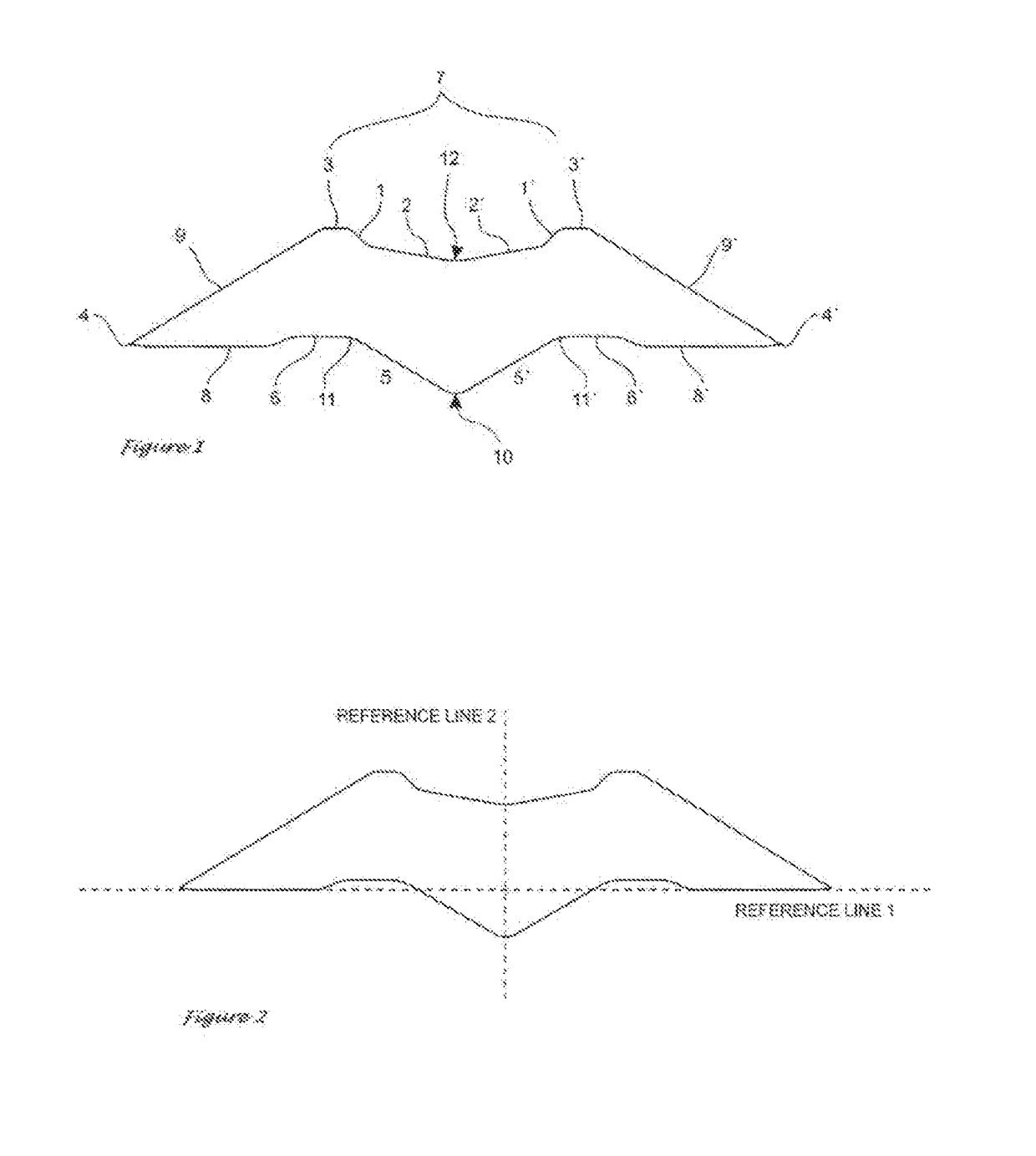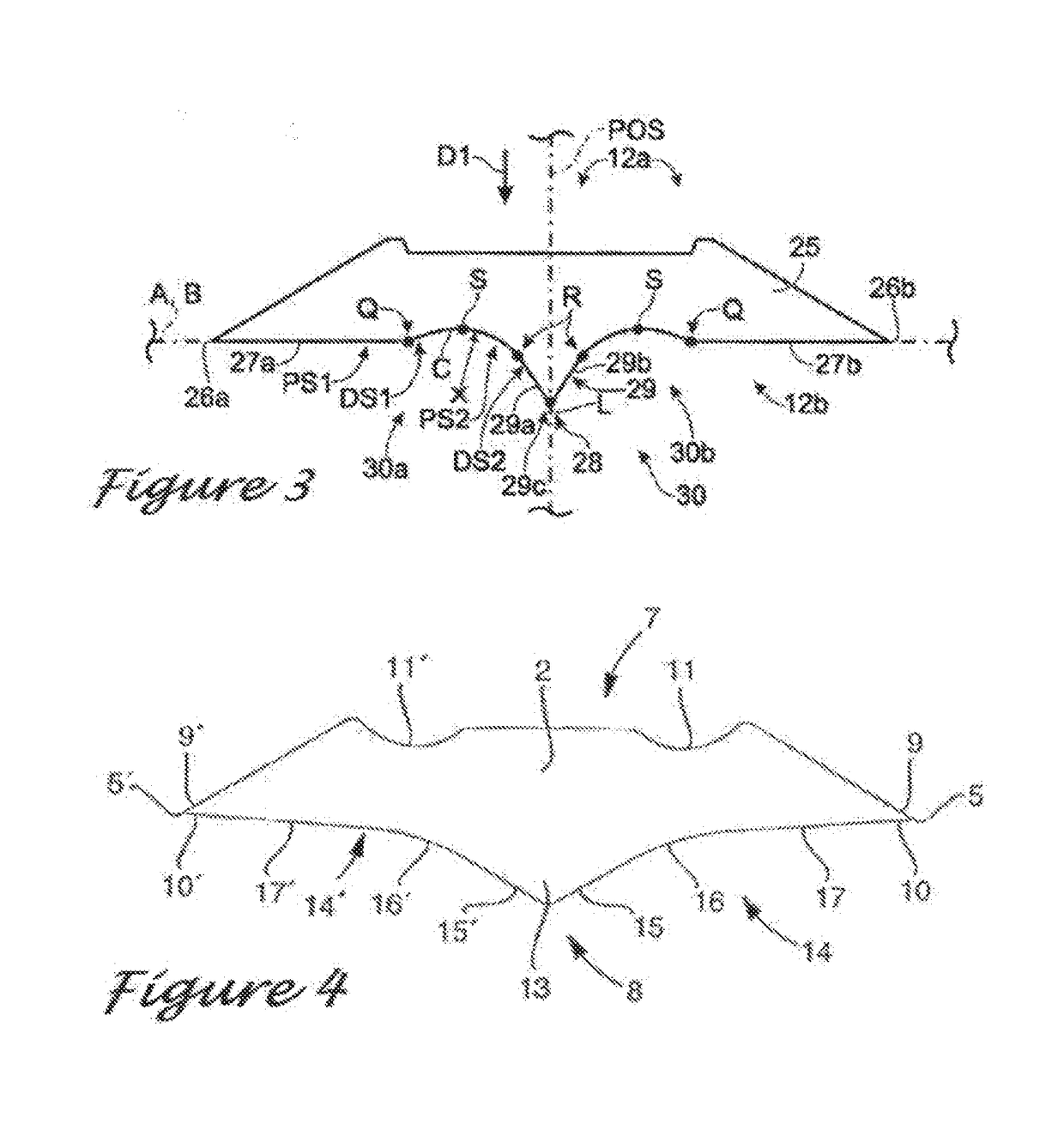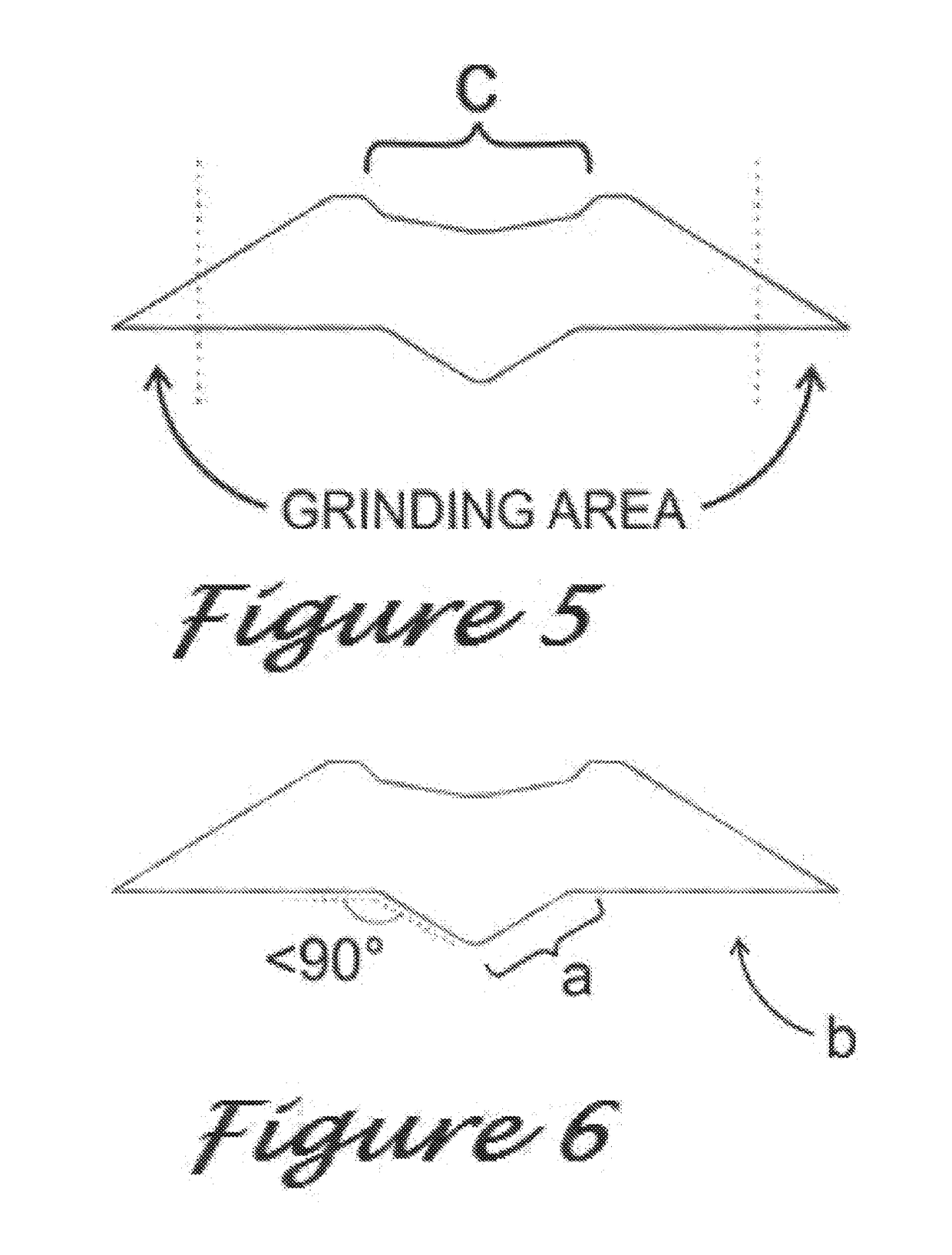Industrial wood chipper knife and method for manufacturing an industrial wood chipper knife
a technology of industrial wood chips and industrial wood chips, which is applied in the direction of manufacturing tools, woodworking apparatus, rotary cutting tools, etc., can solve the problems of reducing the production of high-quality wood chips, significant downtime of chipping machines, and limited acceptance, so as to avoid deficiencies, improve production efficiency, and optimize geometry and size
- Summary
- Abstract
- Description
- Claims
- Application Information
AI Technical Summary
Benefits of technology
Problems solved by technology
Method used
Image
Examples
Embodiment Construction
[0023]The knife and manufacturing process of the present invention is an improvement on existing designs by optimizing the size of the knife to eliminate twisting and bending associated with patent U.S. Pat. No. 8,082.958 and the leverage action that causes 49.918 to lose stability, while also drastically reducing the manufacturing cost by eliminating the need for expensive form grinders.
[0024]The current invention solves the problem of twisting and bending of the knife by utilizing a multy angle clamping zone that is narrower than patent U.S. Pat. No. 8.082.958 yet provides equal or greater clamping force. The invention provides more contact on the bottom of the knife, which allows the clamping area to be narrower and add thickness to the knife. This added thickness prevents the knife from bending or twisting during heavy operation.
[0025]The leverage action caused by the prior art in 49.918, which g increases the force on the knife and requires a large clamp to hold the knife in pl...
PUM
 Login to View More
Login to View More Abstract
Description
Claims
Application Information
 Login to View More
Login to View More - R&D
- Intellectual Property
- Life Sciences
- Materials
- Tech Scout
- Unparalleled Data Quality
- Higher Quality Content
- 60% Fewer Hallucinations
Browse by: Latest US Patents, China's latest patents, Technical Efficacy Thesaurus, Application Domain, Technology Topic, Popular Technical Reports.
© 2025 PatSnap. All rights reserved.Legal|Privacy policy|Modern Slavery Act Transparency Statement|Sitemap|About US| Contact US: help@patsnap.com



